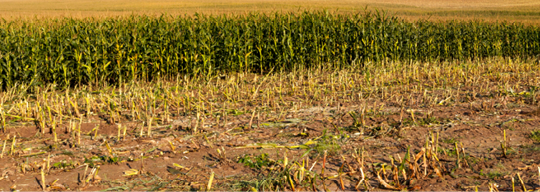


Corn is the most important silage plant in the world. It provides high yield and high-energy forage and is adapted to mechanized harvesting requirements.
In this bulletin, we discuss the effect of variable irrigation and nitrogen application rates on silage corn yield and water use efficiency under sprinkler (SPR), sub-surface drip irrigation (SDI), and on-surface drip irrigation (ODI) system. We found during our research at the University of Wyoming Powell Research and Extension Center that drip irrigation systems can help save as much as 50 percent of water used for irrigation and also provide high yields.
Silage corn requires adequate amounts of water, nutrients, and good management practices for profitable production. Water, the main factor limiting crop production in arid and semi-arid regions, needs to be optimised to boost silage corn yield and enhance water use efficiency (WUE). Similarly, nitrogen (N) fertilizer is considered one of the best crop input investments for corn production; however, N is the most costly nutrient for farmers. The best management practices for N, such as the use of proper application rates, appropriate application methods and timing, are important for high silage corn production.
In Wyoming, corn for silage is mainly grown under flood and furrow irrigation, while some farmers rely on pressurized irrigation systems such as overhead sprinkler and drip irrigation.
June 2018
B-1326













Different irrigation systems and nitrogen rates improve yield and water use efficiency of
corn silage
Experimental evidence
Field experiments from 2013-2015 at the Powell Research and Extension Center consisted of three irrigation treatments and five N fertilizer rates applied on silage corn grown under SDI (Figure 1), ODI (Figure 2), and SPR (Figure 3) irrigation systems. Irrigation treatments were based on crop evapotranspiration (ETc), which is a combination of soil water evaporation and plant transpiration. Detailed information of ETc is provided in the UW Extension Bulletin Evapotranspiration: Basics, Terminology and its Importance, B-1293.
The irrigation treatments consisted of full irrigation (100 percent ETc [100ETc]), deficit irrigation treatment of 80 percent ETc, and 60 percent ETc. Liquid N fertilizer was side-dressed as urea ammonium nitrate at V3 growth stage (Figure 4) at 0, 80, 160, 240, and 320 pounds per acre.
Under the SPR system, only 80, 160, and 240 pounds of N per acre were applied. Corn was planted on May 25, 2013, and May 22 during the 2014 and 2015 growing seasons. Plots were harvested in mid-September 2013 and 2014 and late August in 2015 (Table 1). The plants were then oven dried at 140°F for 72 hours for dry matter yield measurement. The WUE was calculated as the ratio of dry matter yield and the crop water use during the growing season.
Phenology (growth stages) of silage corn
Phenology of silage corn was monitored three times a week during the three years. The 2013 and 2014 growing seasons were long compared to 2015 because of late harvest due to heavy rain in late August 2013 and late crop emergence in 2014. Flowering and pollination started 69 days after planting (DAP) in 2013 compared to 80 DAP in 2014 and only 65 DAP
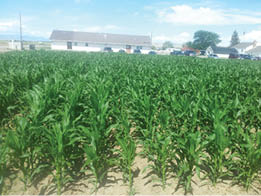

Figure 1. Silage corn grown under sub-surface drip irrigation at the Powell Research and Extension Center.
Figure 2. Silage corn grown under on-surface drip irrigation at the Powell Research and Extension Center.
2

in 2015. The growth of silage corn is influenced by ambient temperature. The higher the temperature, the faster the crop grows. Using the corn hybrid Pioneer ‘P8107HR’, which is considered a short-growing season hybrid, the pollination period does not usually last for more than three days. In our experiments, it only lasts for two days under the three irrigation systems. The crop was harvested for silage when more than 50 percent of plants reached dough (R4) stage (Table 1). This is typically the appropriate stage to harvest corn for silage to obtain high yield and quality.
Performance of the irrigation systems
The yield of silage corn was similar among different irrigation systems (Figure 5). However, comparing the irrigation treatments revealed 100ETc and 80ETc had higher yields than 60ETc treatment. For instance, yield decreased by 39 percent when 60ETc was applied under the SDI system. Similarly, yield decreased by 37 percent when 40 percent of the water was reduced under the SPR system. The most drastic decrease was under the ODI system with a 75-percent decrease in yield when 60ETc was applied. Both 100ETc and 80ETc showed there was not much yield decrease, especially under SDI and SPR systems.
The irrigation water applied was 10.1, 10.8, and 15 inches for SDI, ODI, and SPR, respectively (Table 2). The vegetative growth stages used almost half of the water applied during the growing season. The seasonal water use was 12.4, 13.8, and 17.1 inches of water under SDI, ODI, and SPR, respectively (Table 2). The tasseling (VT) and silking (R1) stages are very short
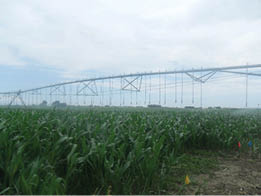

Figure 3. Silage corn grown under sprinkler irrigation at the Powell Research and Extension Center.
Figure 4. Liquid fertilizer applicators (above); side-dressing liquid nitrogen fertilizer at the Powell Research and Extension Center (below).
3

(less than 10 days; Table 1) but they require more water (Table 2). Avoiding water stress during these specific growth stages is recommended.
Comparable yields under the three irrigation systems was depicted based on the amount of water used. The SDI and ODI systems used 38-percent and 24-percent less water compared to the SPR irrigation system, respectively. The WUE was higher under SDI and ODI compared to the SPR system (Figure 6). For full irrigation, the WUE increased by 40 percent and 28 percent for SDI and ODI, respectively compared to the SPR system. The WUE increased with deficit irrigation as a result of reduced amounts of water applied.
The SDI and ODI systems obviously saved much water compared to the SPR.
Selecting the proper irrigation method depends on various factors including the budget allocated to invest in such efficient systems as well as the soil characteristics that control the intake and distribution of water, land slope, and crop tolerance to water and wind. The SDI and ODI, if properly managed, offer several potential advantages over other methods of irrigation. Both offer a greater water application uniformity and an increased WUE than the sprinkler method. Both have the ability to deliver water slowly to the plants, and they are very useful in windy areas. Surface runoff, deep percola
Figure 5. Yield of silage corn under different irrigation treatments at the Powell Research and Extension Center. SDI = sub-surface drip irrigation; ODI = on-surface drip irrigation; and SPR = sprinkler irrigation.
4

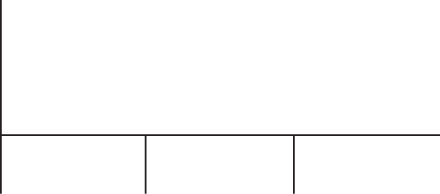

Yield
20,000
16,000
12,000
8,000
4,000
0
100 ETc
100 ETc
100 ETc
80 ETc
80 ETc
80 ETc
SDI
ODI
Irrigation Treatment

SPR
60 ETc
60 ETc
60 ETc
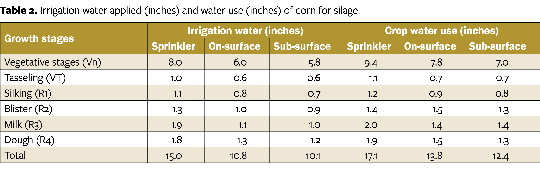
tion, and evaporation are greatly reduced or eliminated under SDI and ODI, which limits the nutrients and chemical hazards associated with leaching. Precise and timely fertilizer and pesticide application through both systems can result in greater efficiency and, in some cases, reduction in their use.
Effect of nitrogen on corn silage production
Nitrogen has great effect on silage corn yield (Table 3). The more N added, the higher the yield. High values were obtained starting at 160 pounds N per acre under the three irrigation systems. The irrigation systems did
Figure 6. Water use efficiency of silage corn under different irrigation treatments at the University of Wyoming Powell Research and Extension Center. SDI = sub-surface drip irrigation; ODI = on-surface drip irrigation; and SPR = sprinkler irrigation.
5
Water use efficiency
0.50
0.40
0.30
0.20
0.10
0
100 ETc
100 ETc
100 ETc
80 ETc
80 ETc
80 ETc
SDI
ODI
Irrigation Treatment

SPR
60 ETc
60 ETc
60 ETc

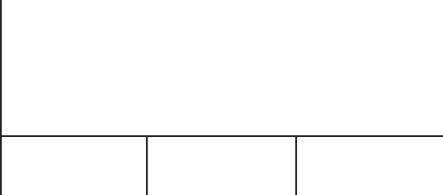



Issued in furtherance of extension work, acts of May 8 and June 30, 1914, in cooperation with the U.S. Department of Agriculture. Bret Hess, Interim Dean/Director, College of Agriculture and Natural Resources, University of Wyoming Extension, University of Wyoming, Laramie, Wyoming 82071.
Persons seeking admission, employment, or access to programs of the University of Wyoming shall be considered without regard to race, color, religion, sex, national origin, disability, age, political belief, veteran status, sexual orientation, and marital or familial status. Persons with disabilities who require alternative means for communication or program information (Braille, large print, audiotape, etc.) should contact their local UW Extension office. To file a complaint, write to the UW Employment Practices/Affirmative Action Office, University of Wyoming, Department 3434, 1000 E. University Avenue, Laramie, WY 82071.
not show much difference in yield among N rates. The 160, 240, and 320 pounds N per acre showed slight differences in yield suggesting 160 pounds N per acre as beneficial for silage corn production.
Summary
Understanding the effect of irrigation water and N opens the opportunity to improve silage corn production. The irrigation water and N fertilization improve nutrient uptake and yield. In addition, limited irrigation combined with appropriate rates of N fertilizer can reduce the likelihood of N losses via leaching. The outcomes of these experiments demonstrate the following:
References
Goorahoo, D., F.C. Sharma, D.D. Adhikari, and S.E. Benes. 2011. Irrigation (sixth edition). Irrigation Association. 1045.
Herrero, J., J.D.A. Robinson, and J. Nogue´s. 2007. “A regional soil survey approach for upgrading from flood to sprinkler irrigation in a semi-arid environment.” Agricultural Water Management 93:145–152.
Khandakar, Z.H., and M.M. Islam. 1988. “Effect of nitrogen fertilization and stage of maturity on yield and quality of fodder maize. Animal Science 17:47–53.
Kim, K., D.E. Clay, C.G. Carlson, S.A. Clay, and T. Trooien. 2008. “Do synergistic relationships between nitrogen and water influence the ability of corn to use nitrogen derived from fertilizer and soil?” Agronomy Journal 100:551–556.
Pikul, J.L., L. Hammack Jr., and W.E. Riedell. 2005. Corn yield, nitrogen use, and corn rootworm infestation of rotations in the northern Corn Belt. Agronomy Journal 97:854–863.
Sharma, V., J. Heitholt, and M.A. Islam. 2016. Evapotranspiration: Basics, terminology and its importance. B-1293. (http://www.wyoextension.org/agpubs/pubs/B-1293.pdf ).
6
